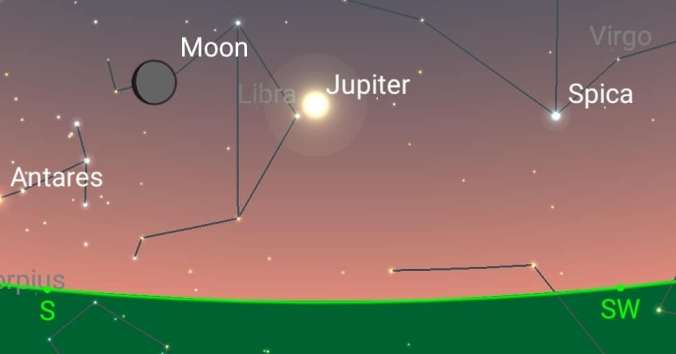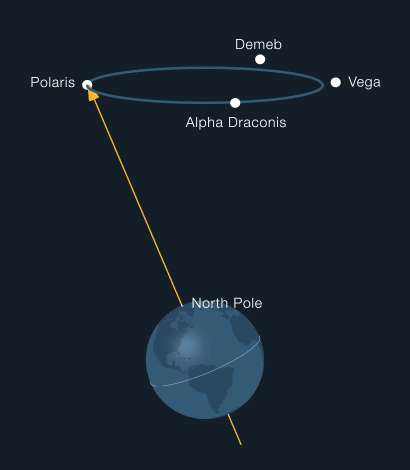
A line of the Moon, Jupiter and the bright star Spica can be seen tonight in the S/SW as the Sun sets (try after 11.30pm or later if it’s still too light). Spica is the brightest star in the constellation Virgo and was the star that helped unearth the 26,000 year cycle known as the Precession of the Equinoxes.
As the story goes a temple in Thebes built around 3000 BC was originally aligned with Spica but the Heliacal sighting was found to have significantly drifted off target some 3200 years later. This fact was taken up by the Greek astronomer, mathematician and geographer Hipparchus who used this and other data to approximate the precessional cycle time of the heavens (as he saw it) to be over 30,000 years. An over estimate but a respectable first guess.
Of course we now know the real reason for this apparent cyclic drift of the constellations over long time scales – 25,772 years to be accurate. A wobble in the earth’s local axis of rotation (see animation below) caused by the gravitational influence of the Moon and Sun on Earth’s equatorial bulge.

There are a couple of interesting side effects of this dynamic. Firstly our pole star slowly changes over thousands of years. In ancient Egyptian times (3000 BC) the northern pole star was Thuban in the Constellation Draco, and in around 12000 years time the pole star will have moved close to brilliant Vega.
The other effect is that the dates of the original Zodiacal star signs are now completely out of sync with the position of the Sun. A child born today (June 24th) is still designated as a ‘Cancer’ (because the Sun is supposed to be in the constellation Cancer right now). But the Sun isn’t in Cancer – it’s actually in Taurus.
Do you mean sun in cancer to sun in Gemini?
LikeLike